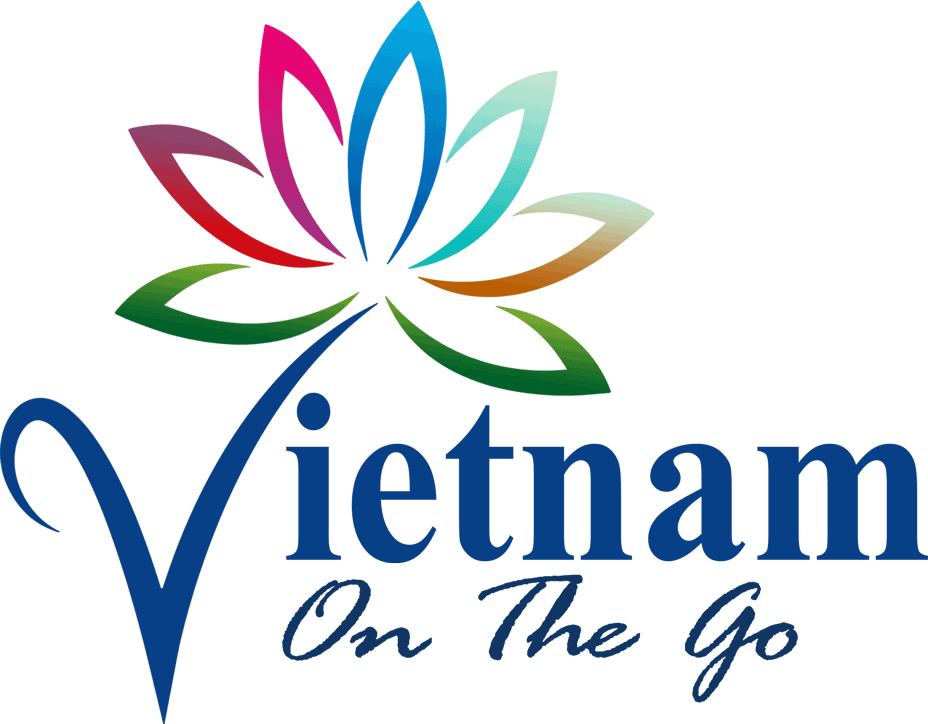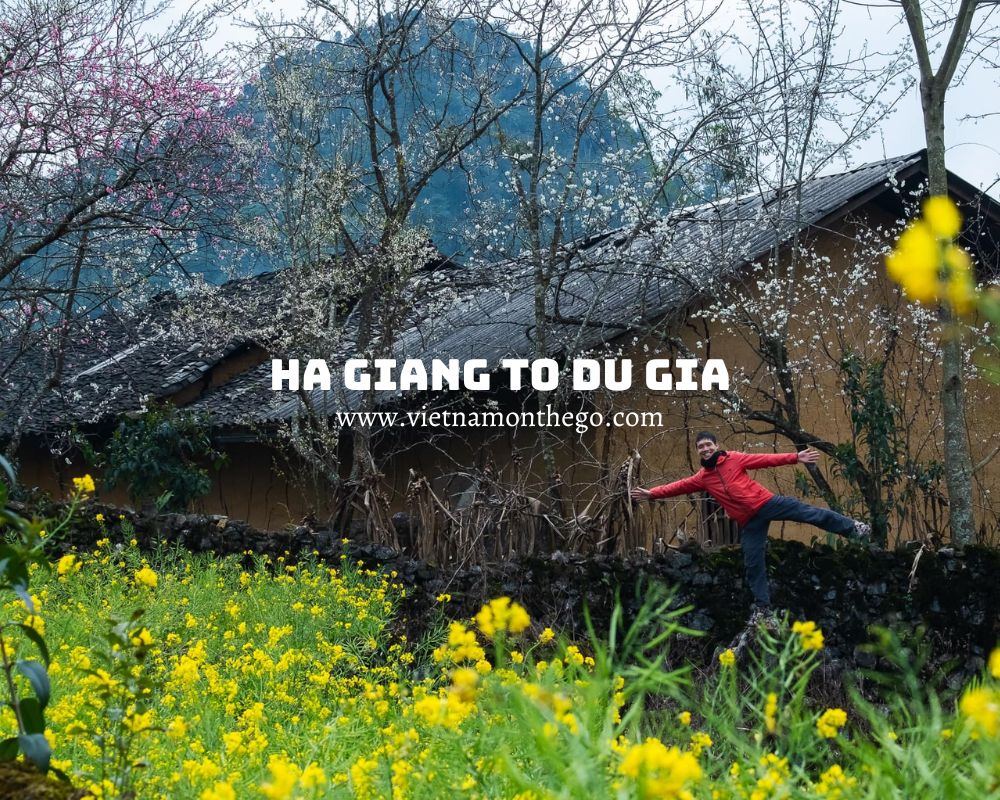Travel Guide, Ha Giang Loop
How to Get from Ha Giang to Du Gia
Traveling from Ha Giang to Du Gia is a journey through some of Vietnam’s most spectacular landscapes. This trip showcases the beauty of Vietnam’s northern mountains, offering travelers a unique blend of cultural exposure and natural splendor. Here’s a comprehensive guide to help you navigate your way from Ha Giang to Du Gia, ensuring a memorable experience.
How to Travel from Ha Giang to Du Gia
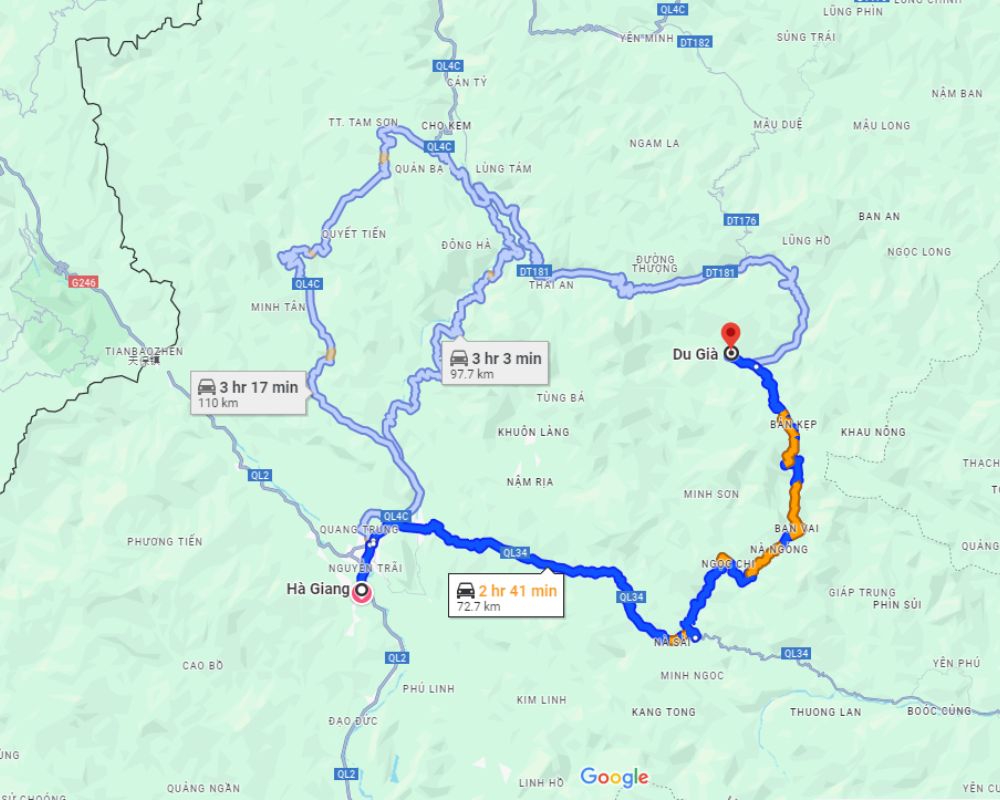
Du Gia is a highland commune in Yen Minh district, approximately 70 km from Ha Giang City. On the Ha Giang tourism map, Du Gia appears as a pristine landscape, relatively unknown to many Vietnamese travelers. Most visitors to Du Gia are adventure enthusiasts, drawn by the challenge of conquering perilous mountain passes. Along the way to Du Gia, travelers will pass through hillsides overlooking the picturesque valleys of Lung Ho commune, Yen Minh district.
Currently, there are no direct bus routes to Du Gia. Travel can only be done by motorbike or car. The road to Du Gia is rough, but the breathtaking scenery and local villages of ethnic minorities on the hillsides overshadow the difficulties of the journey. The landscape along the route from Meo Vac can only be described as “exquisite.”
- From Ha Giang to Du Gia (first route) – 4C National Road + 181 Road – 70km
- From Ha Giang to Du Gia (second route) – National Road + 176 Road – 110km
Du Gia from Ha Giang Travel Options
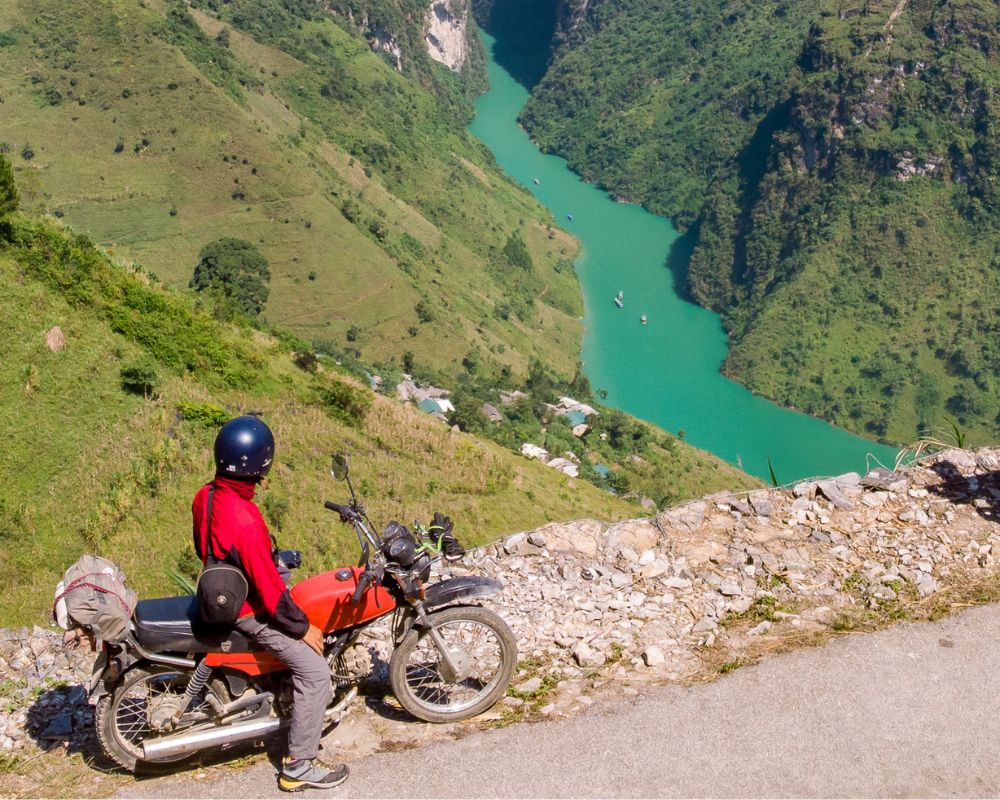
Motorbike
Renting a motorbike is the most popular way to travel from Ha Giang to Du Gia. It offers the flexibility to explore at your own pace and immerse yourself in the stunning landscapes. Make sure you’re comfortable riding on mountainous roads and have a valid motorcycle license. Rental shops are available in Ha Giang City, where you can also buy maps and get route advice.
- Pros: Flexibility, adventure, and close contact with nature.
- Cons: Requires driving skills, especially on mountain roads, and exposure to weather.
Private Car or Taxi
For those who prefer not to ride a motorbike, hiring a private car or taxi is a comfortable alternative. While more expensive, it provides a safer and more relaxed journey, especially for families or groups.
- Pros: Comfort, safety, and convenience.
- Cons: Higher cost and less adventure.
Guided Tour
Joining a guided tour is an excellent option for those looking for a structured experience with insights into the local culture and history. Tours can be customized to include specific stops and activities, such as hiking, visiting local markets, or homestays.
- Pros: Insightful guidance, structured itinerary, and hassle-free arrangements.
- Cons: Less flexibility and possibly more crowded.
Discovering Du Gia: A Tranquil Oasis Amidst Nature’s Splendor
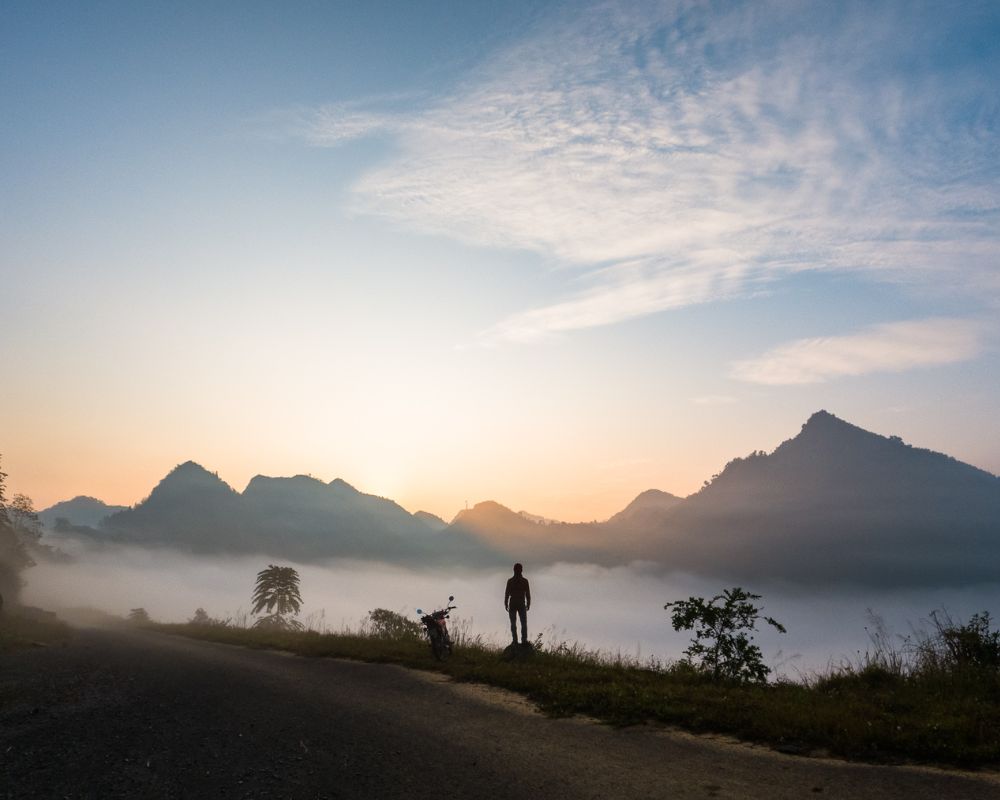
In Du Gia, there aren’t many entertainment spots to visit. The main highlight is the stunning scenic route. You can take a leisurely stroll through the village and witness a day of hard work for the local people in the rice fields. The traditional houses built on stilts serve as cozy abodes for the villagers after a day’s work. Every Saturday morning, there is a bustling market in this small town, where residents from various areas gather, dressed in colorful attire.
On your journey to conquer the most challenging routes in Ha Giang, you can pause at Tham Ma Pass – a winding pass with 9 curves along National Highway 4C. The name Tham Ma, meaning ‘to evaluate the strength of horses,’ derives from the tradition of testing the endurance of horses on this slope. Legend has it that local residents used to challenge horses to carry goods from the foot of the pass to the summit, and any horse that reached the top in good condition was considered excellent and kept for breeding.
From the highest point of the pass, gazing down at this legendary slope, with its stunning valley view, while enjoying a cup of coffee, is truly a remarkable experience. The lingering taste of the evening, coupled with the breathtaking scenery, becomes an unforgettable memory on your exploration journey through Ha Giang.
Du Gia is surrounded by lush mountains, pristine rivers, and picturesque landscapes. It’s the perfect place to immerse yourself in nature’s beauty, away from the hustle and bustle of city life. The area is known for its stunning waterfalls, terraced rice fields, and dense forests, offering plenty of opportunities for hiking, photography, and simply taking in the breathtaking scenery. You can embark on trails that lead you through forests, across rivers, and up to scenic viewpoints. Guided treks are available, allowing you to explore the region’s hidden gems while learning about the flora, fauna, and local legends associated with the area.
What to Eat and Where to Stay
What to Eat
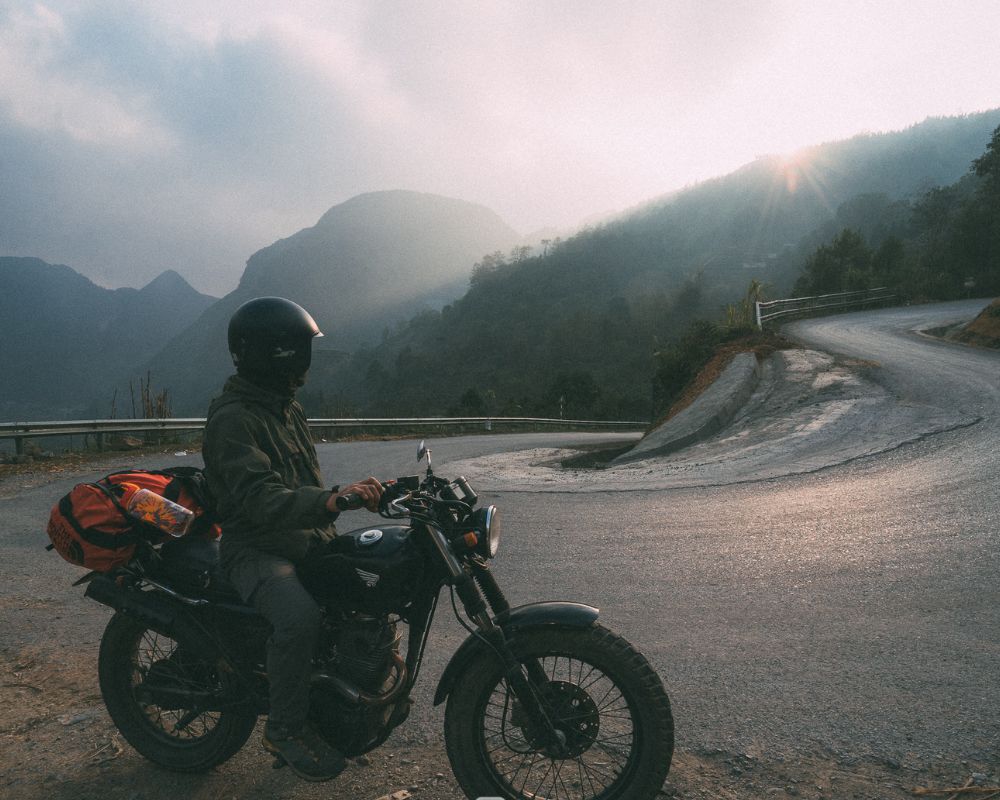
Local Homestays: Many homestays in Du Gia offer authentic home-cooked meals as part of their accommodation package. You’ll have the opportunity to enjoy traditional dishes prepared with fresh local ingredients. Don’t hesitate to try specialties like grilled fish, bamboo-tube rice, sour soup, and various stir-fried vegetables.
Street Food Stalls: Along the main roads or in the town center, you’ll find small street food stalls offering quick and tasty meals. These stalls often serve dishes like pho (noodle soup), banh mi (Vietnamese sandwich), and various rice and noodle dishes. It’s a great way to sample local flavors while exploring the area.
Local Markets: Du Gia has small local markets where you can find fresh produce, snacks, and sometimes street food vendors. You can purchase fruits, vegetables, and snacks for a picnic or try local snacks like roasted peanuts, sticky rice cakes, or crispy spring rolls.
Where to Stay
Homestays: Du Gia is known for its authentic homestay experiences, where you can stay with local families in traditional houses. Homestays provide a unique opportunity to immerse yourself in the local culture, interact with the villagers, and enjoy homemade meals. Some popular homestays in Du Gia include Nha Toi Homestay and Du Gia Homestay.
Guesthouses and Lodges: Besides homestays, there are also guesthouses and lodges available in Du Gia. These establishments provide basic amenities and comfortable lodging options. Some recommended options are Du Gia Guesthouse and Du Gia Lodge.
It’s worth noting that accommodations in Du Gia are relatively basic, in keeping with the rural setting. Facilities might be more limited compared to urban areas, but the warm hospitality and authentic experiences make up for it.
When making reservations, it’s advisable to book in advance, especially during peak travel seasons, to ensure availability. Additionally, keep in mind that English proficiency might be limited, so having a translation app or basic Vietnamese phrases can be helpful during your stay.
Tips and Recommendations for a Memorable Ha Giang-Du Gia Adventure
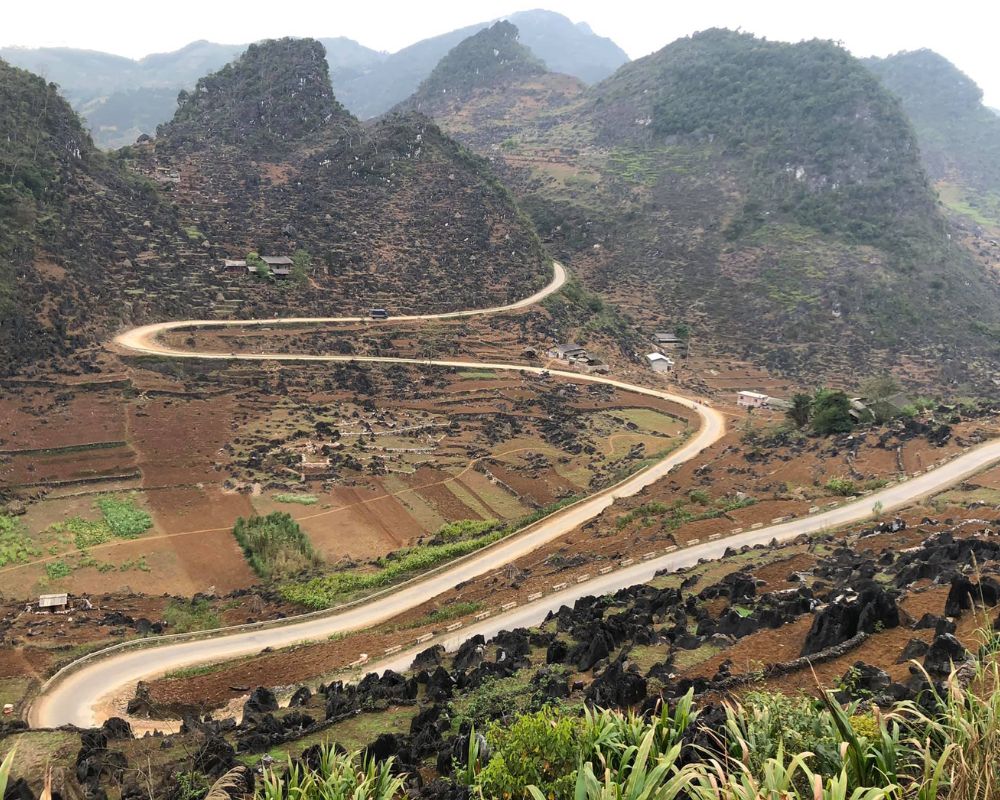
The road from Ha Giang to Du Gia promises to be a memorable experience! Here are some tips and recommendations to make the most out of your trip:
- Plan your itinerary: Research and plan your itinerary in advance. Ha Giang and Du Gia have plenty of beautiful landscapes and attractions to explore, so make sure to allocate enough time for each place and consider the distances between them.
- Rent a motorbike: One of the best ways to explore Ha Giang and Du Gia is on a motorbike. Renting a motorbike will give you the freedom to navigate the winding roads and enjoy the breathtaking scenery at your own pace. Make sure to choose a reliable rental service and wear proper safety gear.
- Check the weather: Ha Giang’s weather can be unpredictable, so check the forecast before your trip. The best time to visit is from September to November or from March to May when the weather is mild and the landscapes are vibrant. Be prepared for temperature changes and pack accordingly.
- Be prepared for challenging roads: Some roads in Ha Giang can be challenging, with steep inclines, hairpin bends, and unpaved sections. Be cautious and drive at a safe speed. If you’re not confident in your driving skills, consider hiring a local guide or joining a guided motorbike tour.
FAQs
How far is Du Gia from Ha Giang?
The distance from Ha Giang to Du Gia is approximately 70 kilometers (40 miles), but the journey can take 3-4 hours due to winding mountain roads.
What is the best time of year to visit Du Gia?
The best time to visit Du Gia is during the spring (March to May) and autumn (September to November) seasons. During these periods, the weather is more favorable for outdoor activities, and the landscapes are particularly stunning.
Is it safe to travel from Ha Giang to Du Gia on a motorbike?
Traveling by motorbike can be safe if you are an experienced rider, have a valid motorcycle license, and take the necessary precautions. Always wear a helmet, drive cautiously, especially on mountain roads, and check the weather forecast before departing.
Do I need a permit to travel to Ha Giang province?
Foreign travelers used to need a travel permit to visit certain areas within Ha Giang province, including the route to Du Gia. However, policies may change, so it’s important to check the latest requirements with local authorities or your tour operator before your trip.
Are there any cultural or language barriers I should be aware of?
While English is not widely spoken in the more remote areas of Ha Giang, including Du Gia, people are generally welcoming to tourists. Learning a few basic Vietnamese phrases and being respectful of local customs and traditions can greatly enhance your experience.
Conclusion
Traveling from Ha Giang to Du Gia is an adventure that offers an unparalleled glimpse into Vietnam’s natural beauty and cultural richness. Whether you choose to navigate the route by motorbike, car, or through a guided tour, you’re in for an unforgettable journey. Prepare well, travel safely, and immerse yourself in the breathtaking landscapes and welcoming communities of Vietnam’s northern frontier.
